I had 10 year old Ikea butcher block that didn’t match thicknesses, had a 6 inch gap at one end, weren’t supported properly and were just plain worn out. So when I stumbled upon these epoxy videos I was instantly sold. It took me a good year to research, find affordable epoxy, and gather the courage to tackle the project. So after successfully pouring epoxy in my own kitchen I quickly moved onto my next project…epoxy over formica. 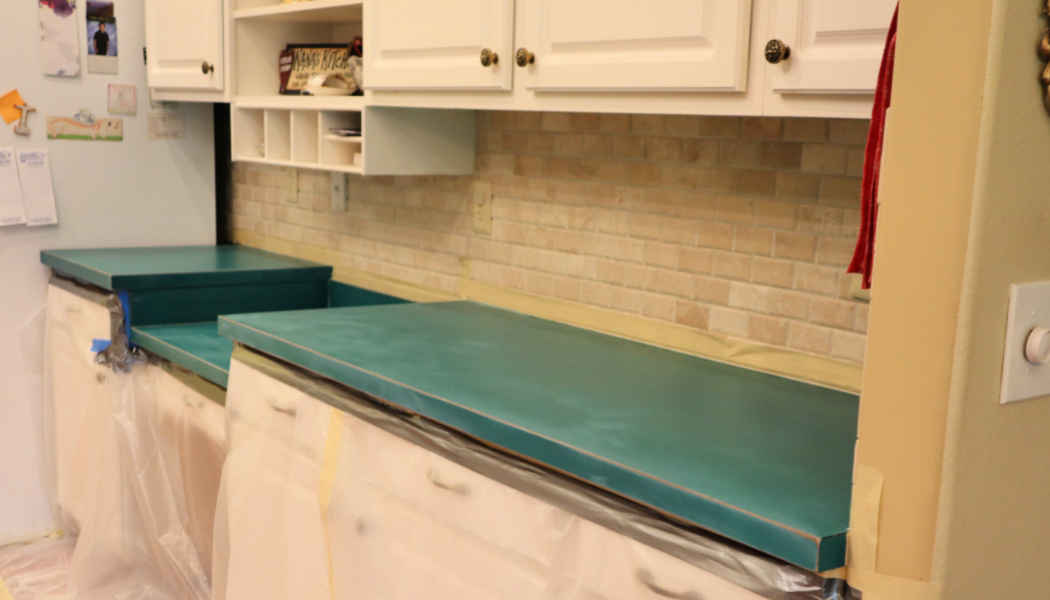 This green formica in a friends kitchen is the culprit. This kitchen previously had a floral wallpaper backsplash that we recently replaced with this tumbled marble.
This green formica in a friends kitchen is the culprit. This kitchen previously had a floral wallpaper backsplash that we recently replaced with this tumbled marble.
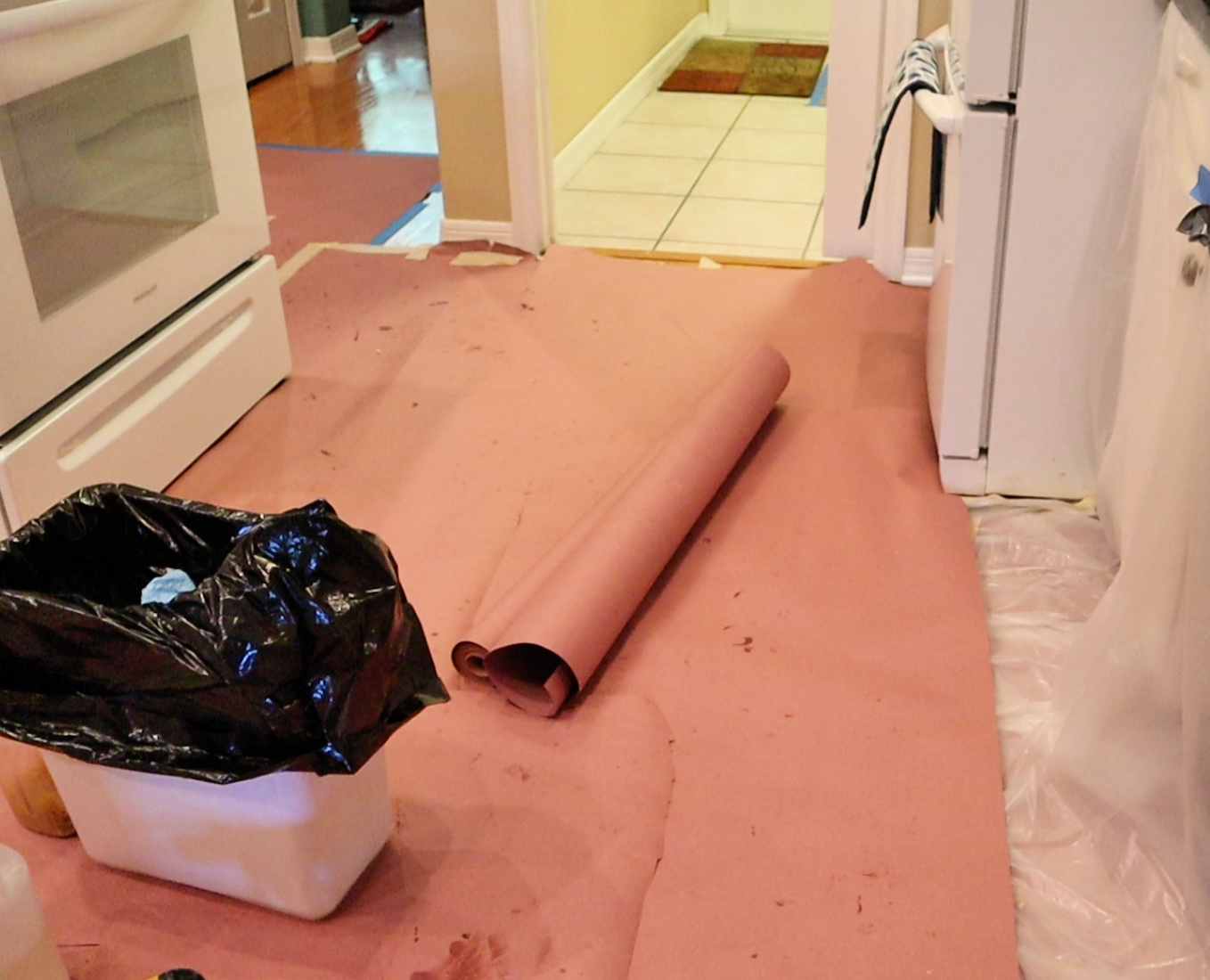 The first and one of the most important steps to an epoxy project is to protect your surrounding surfaces. Epoxy is super sticky and messy. It self levels, which means it will run to the lowest point. So you have to make sure your surfaces are level and you don’t have any cracks or crevices it can seep through.
The first and one of the most important steps to an epoxy project is to protect your surrounding surfaces. Epoxy is super sticky and messy. It self levels, which means it will run to the lowest point. So you have to make sure your surfaces are level and you don’t have any cracks or crevices it can seep through.
I used 7mil plastic tarps and covered all the cabinets and the entire floor of the whole kitchen. Then I used painters rosin paper from Home Depot over the top of the plastic to avoid slipping around on the plastic. The paper is very important because you will get epoxy on your shoes and you don’t want to track epoxy onto the surrounding floors.
The rosin paper is particularly wise because you can lay down new layers of paper right on top of the old sticky paper to keep your area neat and clean.
Double tape your tarps to the counters. I used blue painters to tape the tarps to the cabinets then I used another layer of duct tape to make sure the tarps didn’t come unstuck from the painters tape(which happened in my kitchen).
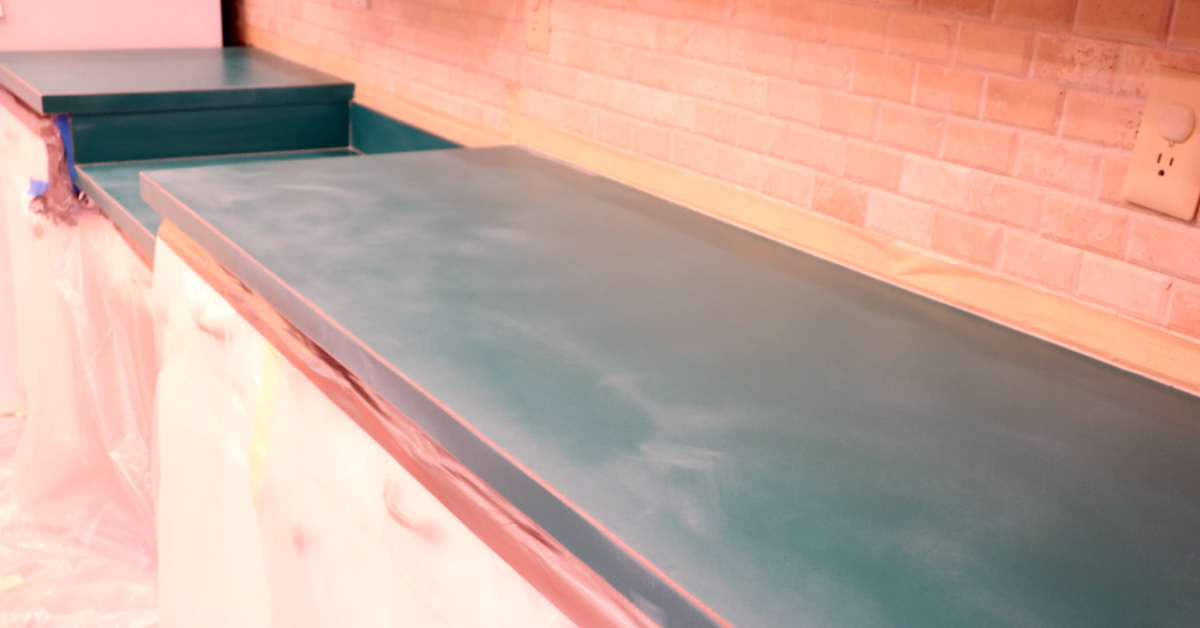 Once everything was sufficiently covered, I sanded the corners of the formica. The epoxy will pool at the corners if it can’t freely flow over the edges, so sanding the edges slightly round will allow the epoxy to flow over. Definitely a must.
Once everything was sufficiently covered, I sanded the corners of the formica. The epoxy will pool at the corners if it can’t freely flow over the edges, so sanding the edges slightly round will allow the epoxy to flow over. Definitely a must.
I also gave the entire surface a light sanding at the same time.
 Wipe off all the sanding dust with a damp cloth and make sure it’s gone by wiping the counter with your bare hand.
Wipe off all the sanding dust with a damp cloth and make sure it’s gone by wiping the counter with your bare hand.
Also, notice I taped off the backsplash tile with tan painters tape rather than blue. This is so if the tape were to get “locked into” the epoxy you wouldn’t really notice it. However, I did leave about 1/8″ gap between the tape and the countertop so this wouldn’t happen. Plus I removed the backsplash tape before the epoxy completely dried. 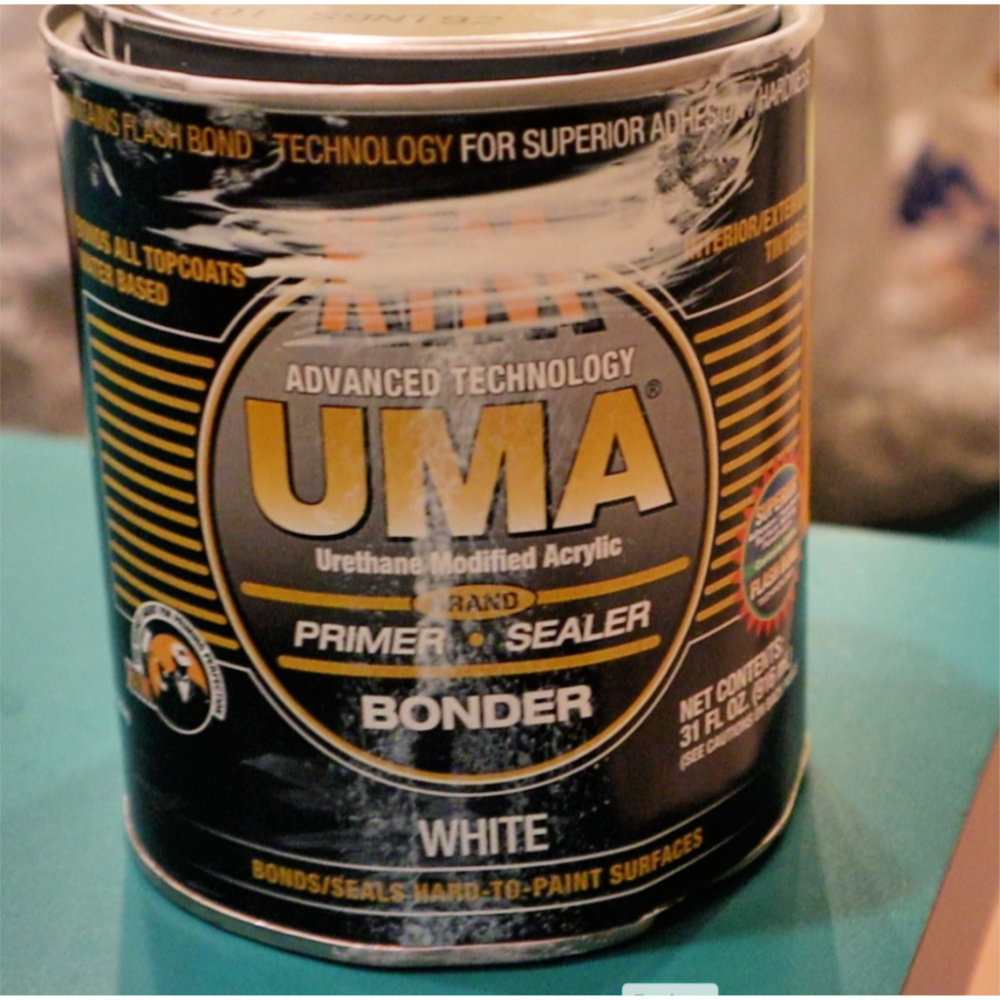 The next step is to prime the formica with a really good bonding primer. I ordered mine from Stonecoat countertops. Although, I think you could probably use any brand high bonding primer. Since this was my first time with laminate, and it’s not my house, I opted to go with the Stonecoat guaranteed primer.
The next step is to prime the formica with a really good bonding primer. I ordered mine from Stonecoat countertops. Although, I think you could probably use any brand high bonding primer. Since this was my first time with laminate, and it’s not my house, I opted to go with the Stonecoat guaranteed primer. 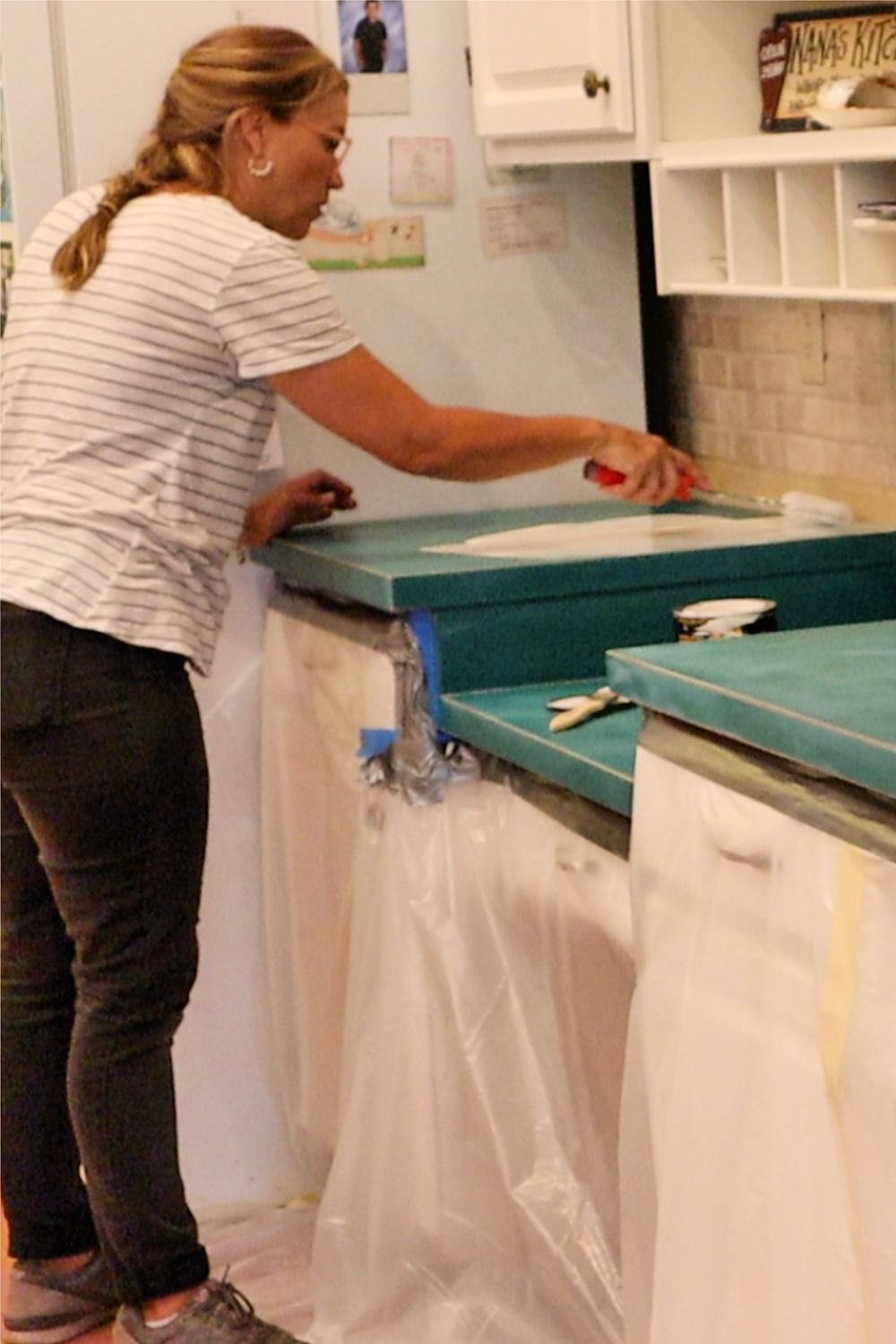 You apply the primer in a thin coat. It doesn’t take much primer to cover the whole kitchen. I only used about 1/3 of the quart for the whole job.
You apply the primer in a thin coat. It doesn’t take much primer to cover the whole kitchen. I only used about 1/3 of the quart for the whole job.
After applying the primer, I applied one coat of good quality paint. I used a flat sheen interior paint by Behr that matches one of the colors in the backsplash, kind of an ivory color. I let the primer dry for 3 hours before applying the Behr top coat and then I let the paint dry overnight.
The next morning I mixed my first coat of epoxy. I mix my epoxy clear and then I add my spray paint to the epoxy on the countertop. I used four colors for this kitchen… light beige, grey, metallic gold, and white.
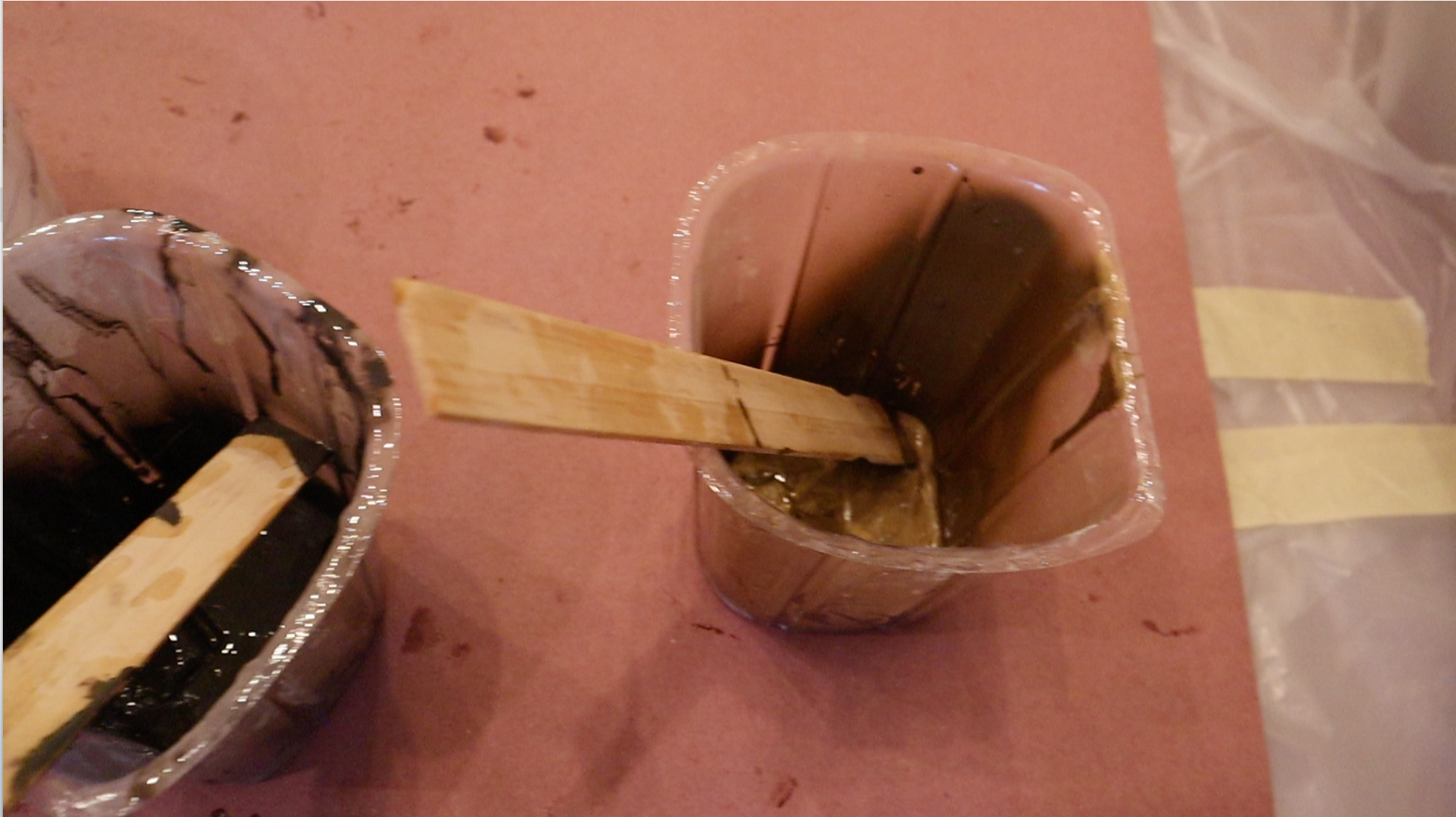 While I was mixing the epoxy for five solid minutes, I had my helper/husband spray a little pool of paints into these plastic buckets. I used a separate bucket for each color and each bucket got its own paint stick for drizzling the color.
While I was mixing the epoxy for five solid minutes, I had my helper/husband spray a little pool of paints into these plastic buckets. I used a separate bucket for each color and each bucket got its own paint stick for drizzling the color.
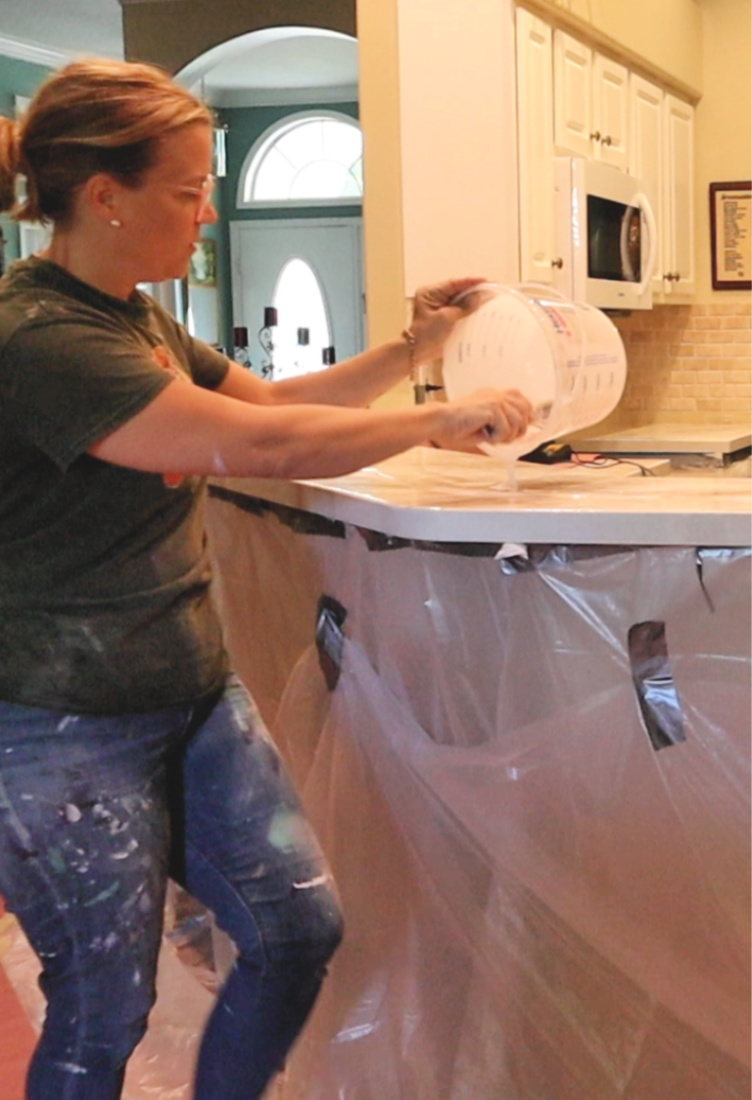 Pour the epoxy onto the countertop scraping the bucket clean.
Pour the epoxy onto the countertop scraping the bucket clean.
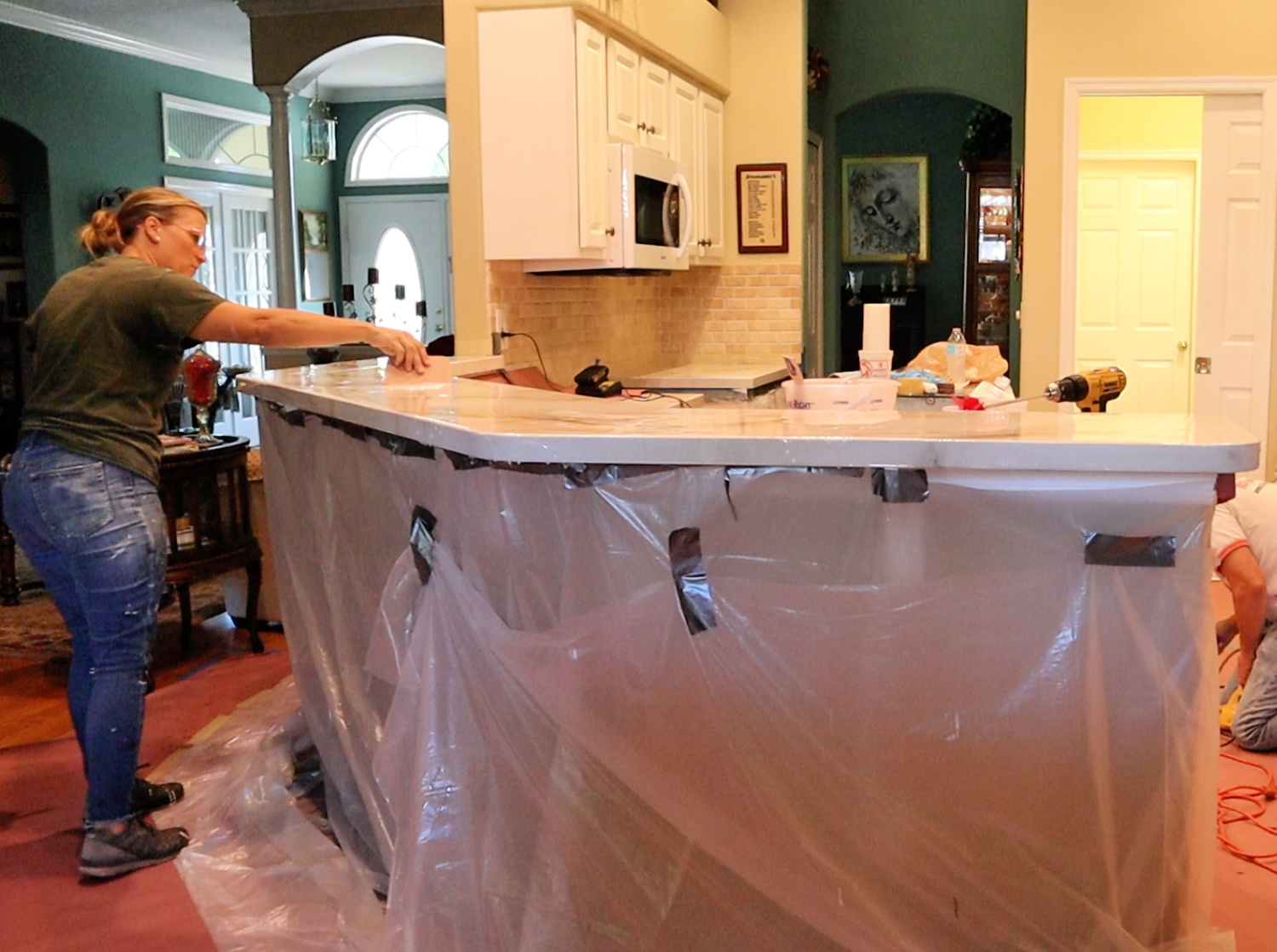 I use a trowel to further mix the epoxy on the counter then spread the epoxy over the entire counter with either a trowel or a foam roller. Bring the epoxy to the edges last and allow the epoxy to flow over the edge. Then use a paint brush to paint over the edges to make sure you have full coverage on the edges.
I use a trowel to further mix the epoxy on the counter then spread the epoxy over the entire counter with either a trowel or a foam roller. Bring the epoxy to the edges last and allow the epoxy to flow over the edge. Then use a paint brush to paint over the edges to make sure you have full coverage on the edges.
This is where you add the spray paint design of your choice. I like mine to look like natural stone. I don’t have any video or pictures of this part unfortunately. I’ll do a separate video on the design portion alone in the near future.
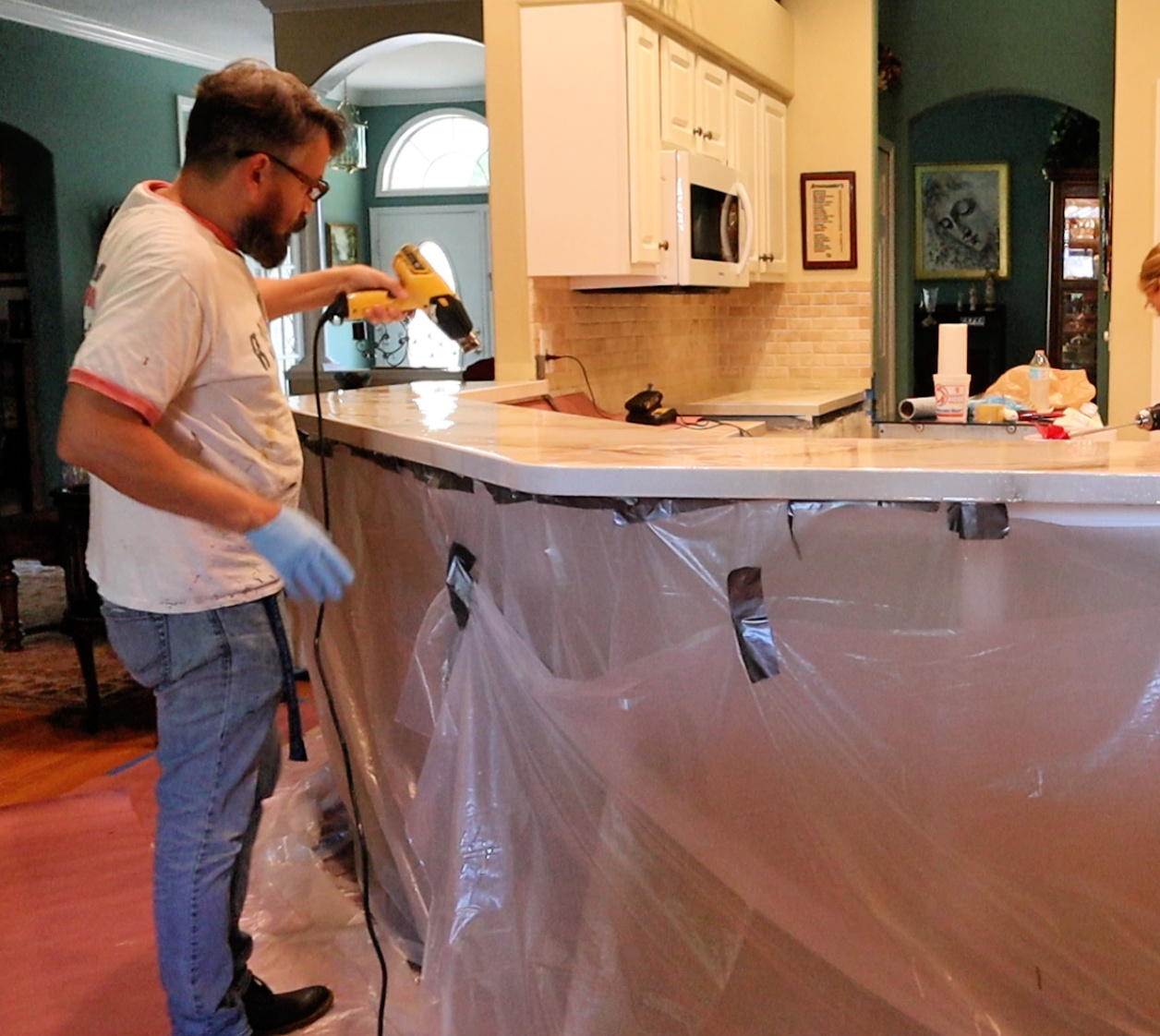 After the epoxy is fully covering the space, use a heat gun to further level the epoxy and pop any air bubbles that may be trapped. At this point get a really close look at your epoxy to remove any stray brush bristles, hairs, lint or anything else that may have found it’s way into your epoxy. A pair of tweezers is very helpful.
After the epoxy is fully covering the space, use a heat gun to further level the epoxy and pop any air bubbles that may be trapped. At this point get a really close look at your epoxy to remove any stray brush bristles, hairs, lint or anything else that may have found it’s way into your epoxy. A pair of tweezers is very helpful.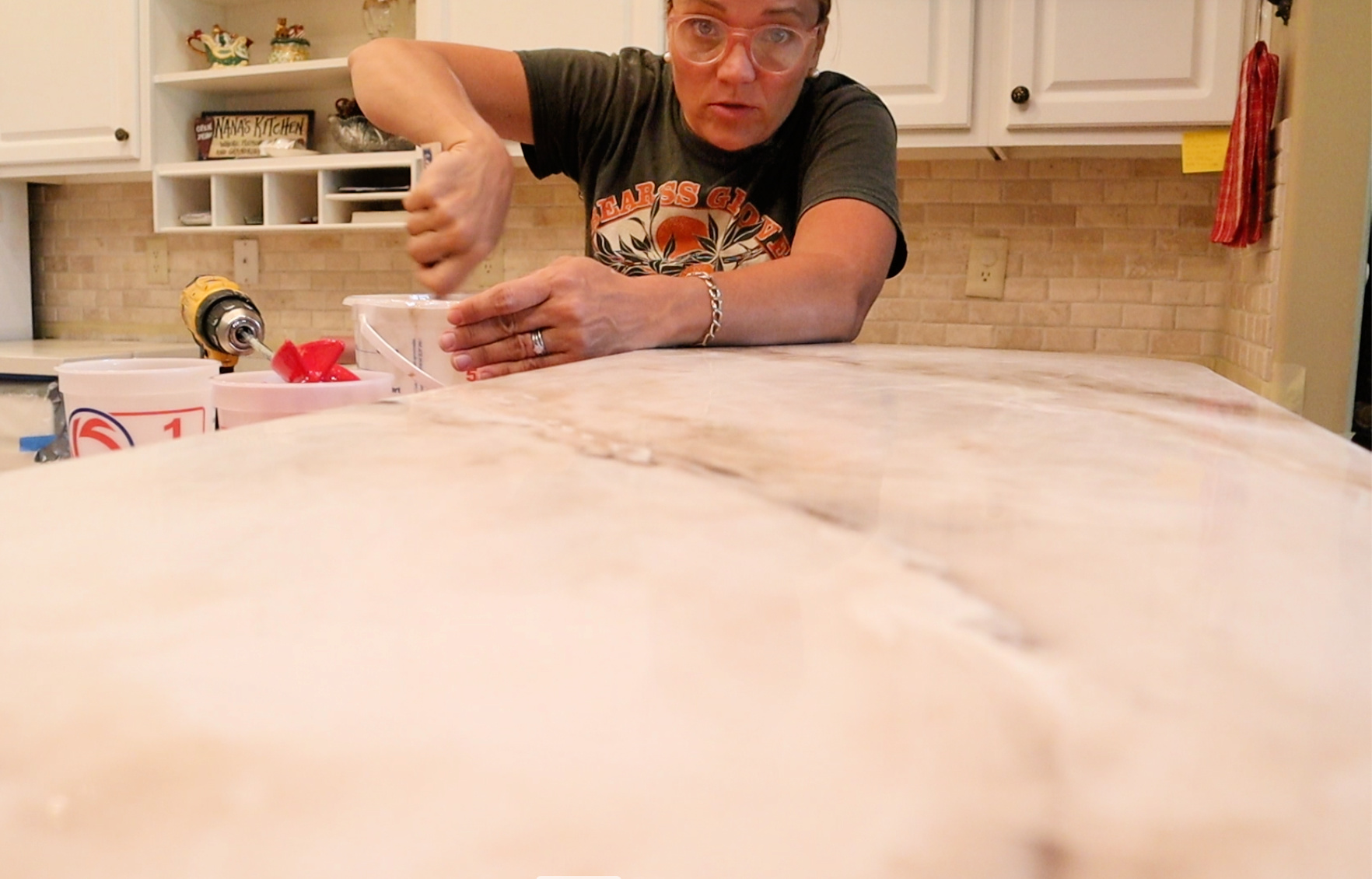 I let the epoxy dry overnight before applying my second coat. You don’t have to wait overnight, but since this is not my house, I came back for the second coat the next day. If you let the epoxy set up overnight you need to lightly sand before applying the second coat.
I let the epoxy dry overnight before applying my second coat. You don’t have to wait overnight, but since this is not my house, I came back for the second coat the next day. If you let the epoxy set up overnight you need to lightly sand before applying the second coat.
The second coat, or in some cases the third coat, really smooths out the surface and gives the marbling depth and dimension. The first coat may have some dimples and possibly some voids or holidays, and the spray paint sometimes causes a sheen difference on the surface. So the second coat of epoxy really makes all the difference.
The second coat goes on just like the first coat. Pour, spread, and wipe the drips from the bottom edge.
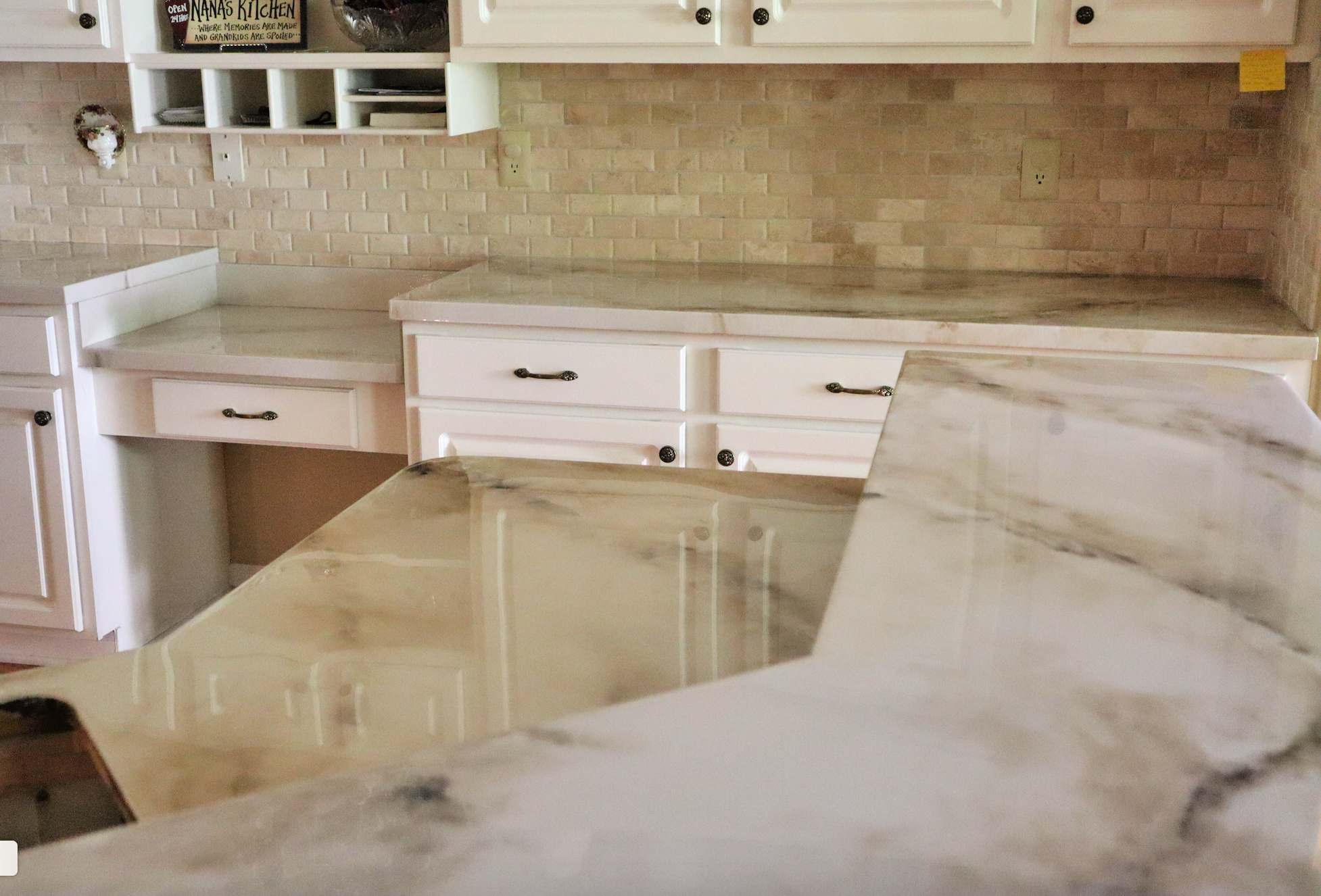 The countertop will be dry to the touch after 24 hours and useable at that point. However, you won’t want to set anything hot on the surface for at least 7 days. For instance a hot cup of coffee will leave a cup indention on the surface, take it from me. A full cure is approximately 30 days.
The countertop will be dry to the touch after 24 hours and useable at that point. However, you won’t want to set anything hot on the surface for at least 7 days. For instance a hot cup of coffee will leave a cup indention on the surface, take it from me. A full cure is approximately 30 days.
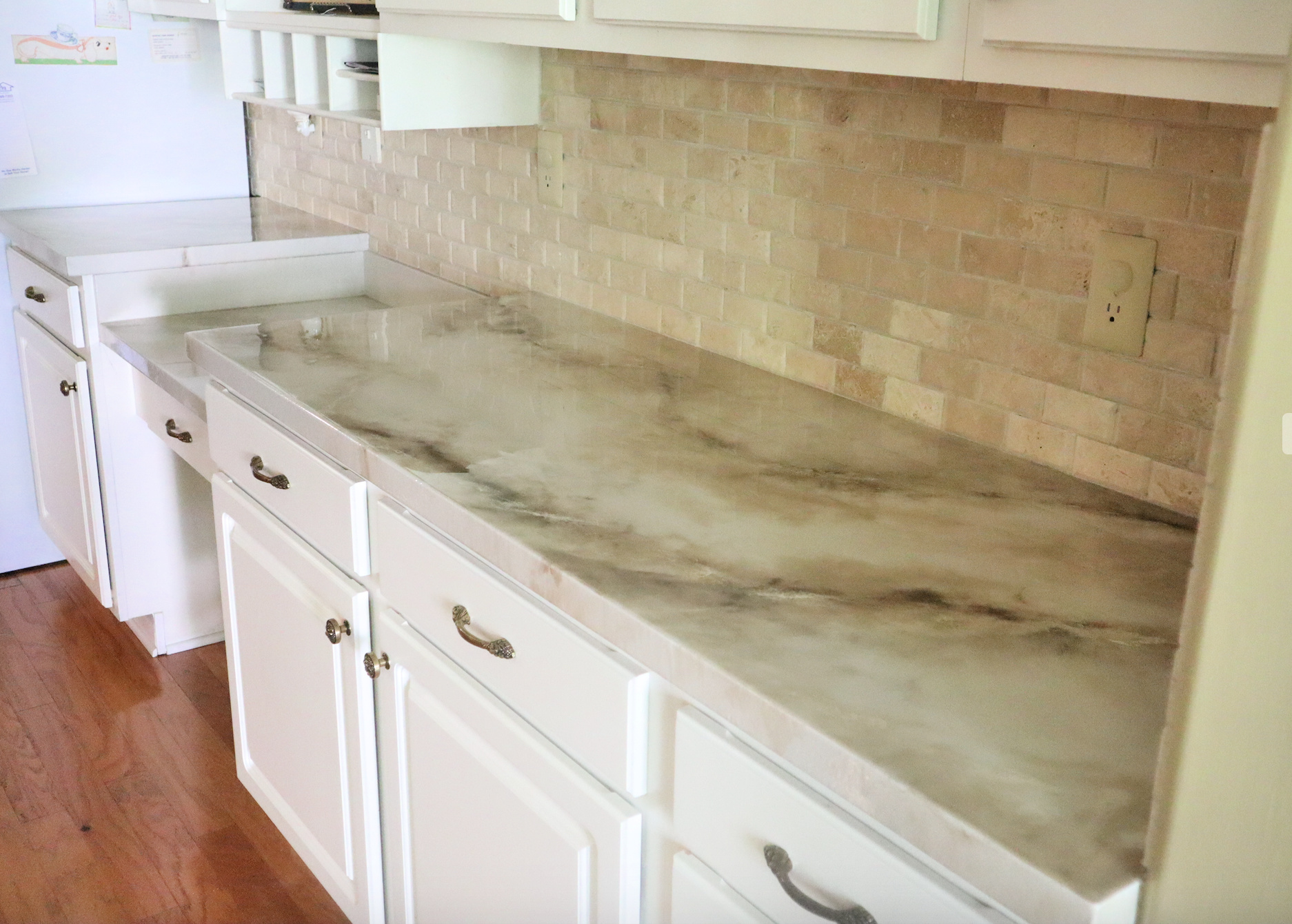 After the counters are fully cured they’re super durable.
After the counters are fully cured they’re super durable. 
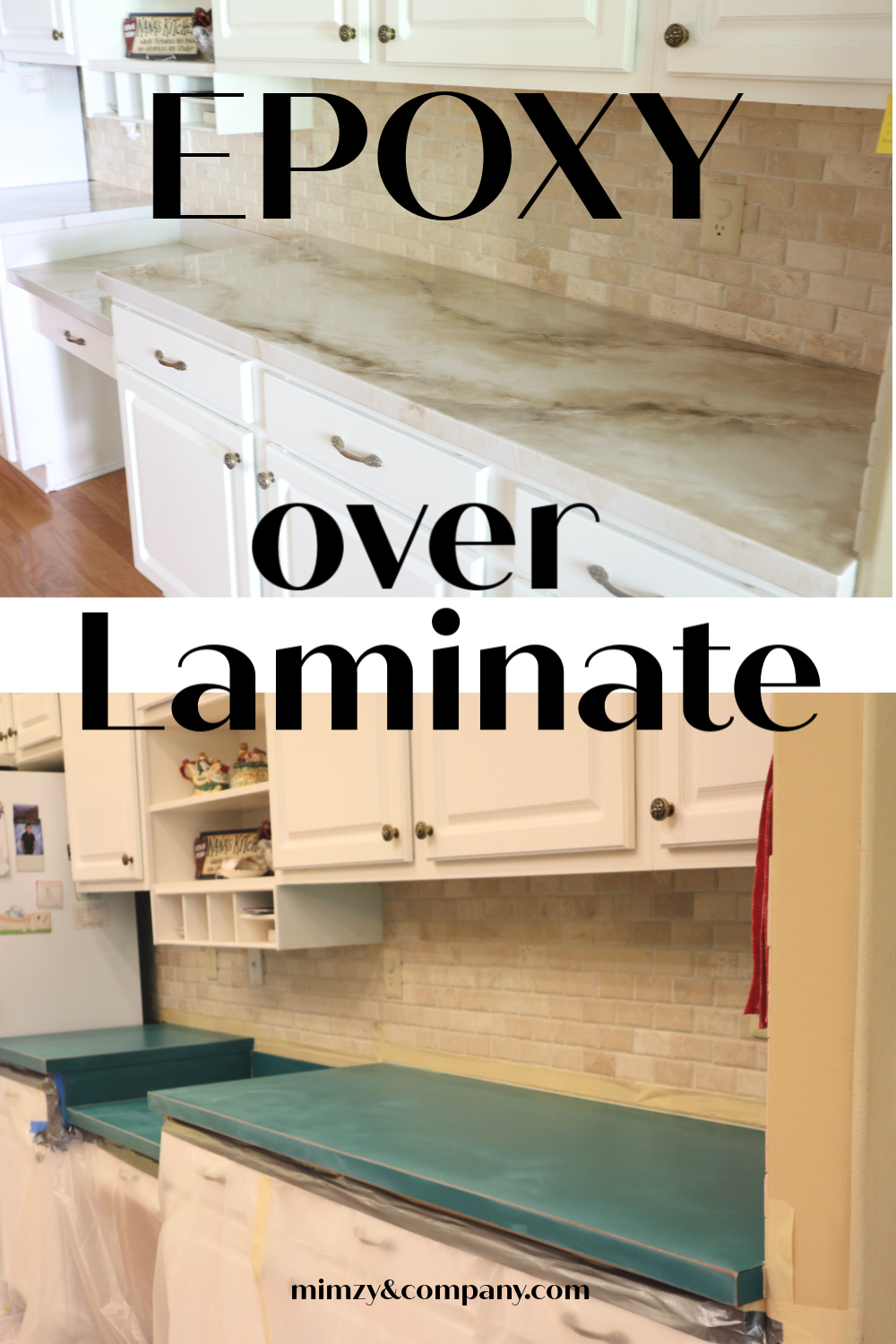 Check out the video, I have a lot more tips and tricks to make the job more efficient and a lot easier.
Check out the video, I have a lot more tips and tricks to make the job more efficient and a lot easier.

 Char Smith says
Char Smith says
June 17, 2021 at 5:00 pmI need to find a company that Epoxy my counters for me our zipcode 64024.
 Carmen Reid says
Carmen Reid says
May 26, 2021 at 2:45 pmHi Mimzy,
OMG you did such an amazing job. Super impressed. I have been planning this project for over a year now and am almost ready to go for it! I do have a question that I am not able to find the answer for. I would like to leave my sink in place. It is me working by myself and I have a newly installed faucet and a heavy white cast iron sink that has a small lip onto the counter. Any ideas of best way to prep? There is a 2 inch space both infront and behind the sink that will need to be filled with epoxy as well.
 Susan says
Susan says
May 17, 2021 at 7:23 pmGreat job!! But im not sure I can take this on lol its a long dry time… but im sure its worth the savings…
 Jay says
Jay says
January 7, 2021 at 11:54 amStunning. I have laminate countertops with a ceramic tile edge. I’m thinking that the tile would take the epoky just fine. Yes?
 Adrienne says
Adrienne says
November 3, 2020 at 4:24 pmhow did you figure out how to do the marbling? did you watch a video?
 Melissa says
Melissa says
August 25, 2020 at 10:20 pmI absolutely love how these countertops turned out! I am curious about your technique. I have not found anything similar to what you’ve done hear. Do you “chop” the colors in like they do on the Stone Coat videos?